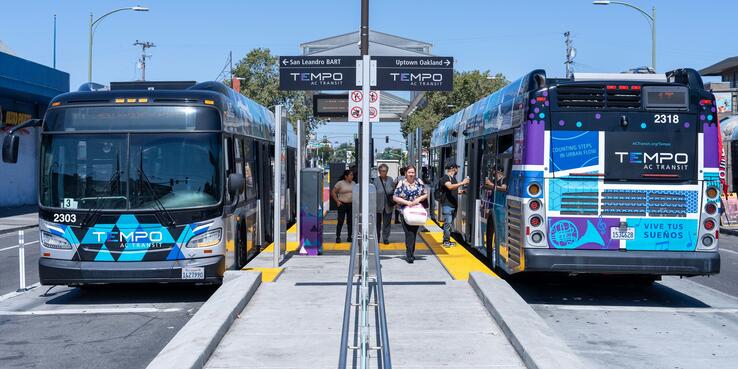In late May of this year, Senator Scott Weiner announced that he was pausing Senate Bill 1031, a piece of legislation sponsored by the Metropolitan Transportation Commission (MTC) that would have authorized a nine-county transportation funding measure to go before Bay Area voters as early as 2026. Following the withdrawal of SB 1031, MTC Chair Alfredo Pedroza quickly moved to appoint a Regional Transportation Revenue Measure Select Committee to develop consensus around a new attempt at enabling legislation, targeting the 2025 legislative session. SPUR was appointed to the 19 member committee along with a number of MTC Commissioners, representatives affiliated with business and labor, transit advocates, and staff from the offices of Senators Wiener and Wahab (the co-authors of SB 1031). Since its inception in June, the Select Committee has met three times and has another two meetings scheduled. The group has discussed the challenges encountered by SB 1031, reviewed polling data, and considered various expenditure plan scenarios that could form the basis for a regional funding measure, as well as discussing the potential for agencies and jurisdictions to individually pursue their own funding measures.
The upcoming 2025 legislative session is the final opportunity for the Bay Area to secure enabling legislation in time to stave off transit cuts that will devastate BART, Muni, Caltrain, AC Transit and others. Now is a moment to be clear-eyed about the risk that the region’s transit system faces. The current work of the Select Committee represents the third attempt to advance funding legislation in less than 18 months. SPUR believes it is essential that the region learn from these past efforts and act strategically to better manage risk. To that end, SPUR recently submitted two significant letters to the Select Committee providing detailed comments and advocating for a recalibration in strategy.
The first letter discusses the expenditure plan scenarios developed by MTC staff and presented to the Select Committee on August 26. While the letter provides input on both of the scenarios, it also questions the strategy of settling on a single legislative approach at this early point in the process. Although SPUR would prefer to see a regional approach to funding transit, we have also consistently argued that transit operators should develop back up plans — imperfect as these may be. The recent withdrawal of the regional Bay Area Housing Finance Authority (BAHFA) affordable housing bond from the 2024 ballot was a stark reminder of the uncertainty inherent in voter campaigns. Similarly, the uncertainty of the upcoming presidential election and the potential mood of the Bay Area electorate hang over any discussions of the 2026 ballot. For all of these reasons, SPUR continues to advocate for the development and authorization of multiple revenue approaches as a risk mitigation strategy.
The second letter addresses the question of what policy considerations should be included as part of regional enabling legislation. Although SPUR has a long history of supporting regional transit reform, we have taken a more calculated stance regarding the inclusion of major policy provisions within authorizing legislation for a funding measure. This approach is based on our reading of the process around SB 1031 (where the inclusion of controversial policy provisions was one of several factors that contributed to the bill’s withdrawal) and on an awareness of just how precarious transit’s financial position is. Stated simply, keeping the region’s biggest transit operators running is far and away the most important investment the Bay Area can make right now to grow ridership and improve the customer experience on transit.
SPUR will continue to actively participate in the Select Committee and other efforts to develop needed funding for transit. We will also continue our decades-long work to improve and transform these essential systems for the riders of today and the future.
